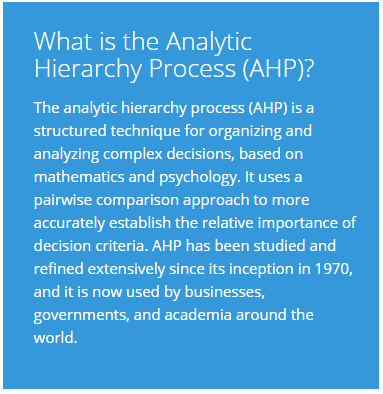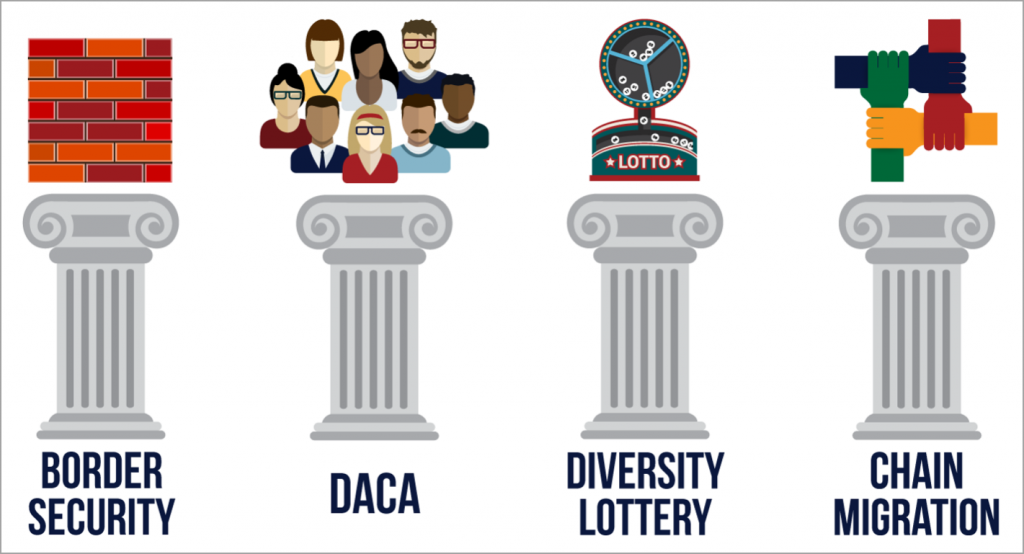Immigration Reform: Prioritizing the Four Pillars for a Common-Sense Solution (Part I)

The national immigration reform debate rages on, while congressmen and women make a disorganized attempt to find a legislative proposal that will garner the necessary 60 votes in the Senate and a majority in the House of Representatives. Their haphazard approach is akin to a blind squirrel finding a nut in the backyard. It may happen occasionally, but it is neither efficient nor effective.
Congress should consider using a proven group decision-making process to determine the relative importance of the decision-making criteria (in this case, the four pillars) so that they can effectively evaluate the alternative legislative proposals and determine which one(s) contribute most to the priorities of the American people.
 How to Share Your Judgments using our “Power Poll”
How to Share Your Judgments using our “Power Poll”
To see how this works and to share your judgments, click here using your smartphone, tablet, or laptop – and enter session code M1822. You will then be prompted to enter your email address and name so that we can establish a unique identity for you in the system. We will not use this info to contact you or share it with anyone. As such, feel free to make up an email address and name if you like, but note that you will not be able to send the results to your email account afterwards.
Rather than just selecting which pillar is the most important to you, we will use our Power Poll that leverages the power and simplicity of the Analytic Hierarchy Process (AHP) (see right).
Using our group decision support system (Definitive Pro™), you will be presented 6 unique comparisons involving two pillars at a time, known as a “pairwise comparison.” In each pairwise comparison (PwC), you will be asked to select which pillar is more important than the other. If you indicate that they are equal, you will move to the next comparison. If you select one over the other, you will be prompted to indicate how much more important (i.e., slightly, moderately, significantly, or extremely).
After you have completed all six PwCs, our software will instantly and accurately determine the relative importance of the criteria using your judgments. You will then be presented with options to view or email (to the email address you provided at login) your individual PwC results or the results of all participants (i.e., the group). The results will be presented in the form of weighting factors associated with each pillar, depicting their relative importance.
The Trump Administration Immigration Plan consists of four pillars (see below), as described by the United States Senate Republican Policy Committee, which was established in 1947.

Here is a summary of each of the four pillars:
Pillar One: Border Security
The framework would strengthen border security by creating a $25 billion trust fund for “the border wall system, ports of entry/exit, and northern border improvements.” It streamlines immigration adjudication and the removal of criminals, gang members, and illegal border-crossers.
Pillar Two: DACA
The administration’s framework would provide legal status for DACA recipients. It would also legalize other people who had been eligible for DACA, but who have not applied for it. The framework would grant recipients a 10- to 12-year path to citizenship, with work and education requirements.
Pillar Three: Border Security
The framework would eliminate the diversity visa program and reallocate visas currently apportioned to the program. The program provides green cards for up to 50,000 immigrants each year from countries with low rates of emigration to the U.S.
Pillar Four: Chain Migration
The administration’s framework would limit family-sponsored green cards to spouses and minor children of U.S. citizens and green card holders. Most immigrants to the U.S. get their green cards because they have a family member who is a U.S. citizen or holds a green card. An unlimited number of green cards may be issued to the minor children, parents, and spouses of adult citizens.
In closing, prioritizing the four pillars is an important first step in selecting a common-sense solution to immigration reform. This step should be followed by creating and weighting measures (i.e., sub-pillars) for each pillar, identifying all the feasible legislative alternatives, and scoring them against each measure. Once the alternative scores have been aggregated, it will be clear which alternative best meets the goal (the subject of my next blog). By using a proven, multi-criteria decision-making methodology, congress could more easily build consensus when solving complex problems.
They might just find that nut in the backyard – and solve the immigration problem once and for all.
© 2018 Definitive Business Solutions. All Rights Reserved.
John Sammarco has thirty-five years of experience leading, managing, and consulting to top public and private sector organizations, and has over twenty years of experience in facilitating complex group decisions. John founded Definitive Business Solutions in 2003, which provides world-class group decision-making solutions to increase efficiency, boost ROI, and reduce risk associated with business and technology investments. In 2016, John developed Definitive Pro™, which helps groups build consensus and make multi-criteria decisions.
